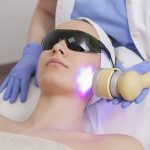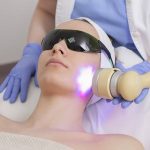A Nurse as a Detective
As detectives, nurses use their clinical imagination together with nursing science to evaluate and determine the consequence of subtle deviations and changes from expected patterns to control and prevent adverse outcomes (Fawcett & Ellenbecker, 2015). Nurses employ their knowledge and experiences to help prevent harm from being perpetrated on their patients as well as creating a healing environment. Being a nurse is like being a detective, and this phenomenon makes the two careers similar. Nurses and detectives must be knowledgeable. Detectives create awareness of their territory by figuring out the type of soil found in their battlefield, how to get around, and when it rained. They can look at care tires or individual’s shoes and know where they have been. Nurse’s territory in their patient. Nurses must find out the patient’s reason for visiting the healthcare setting. They must examine the type of signs and symptoms they need to watch to prevent complications of the patient’s complaint. They should also determine the goals to meet together with the patient for him to get better (Fawcett & Ellenbecker, 2015).
As detectives, nurses should cultivate an eye for detail. Like nurses, detectives observe their surroundings judiciously even when they think there is nothing unique to investigate because may never know what may come up being essential to form a solution of their case. Nurses examine every little thing about their patient because they know every bit of information regarding their patient may make a difference in the care and recovery of the patient (Fawcett & Ellenbecker, 2015).
As a detective, nurses are trained read people’s faces. Both detectives and nurses observe body language and determine whether it seems genuine and rhyme with their words. Patients might be hiding the truth due to cultural beliefs, insufficient knowledge, or because of embarrassment. A patient may say that they may not be feeling well but have facial grimacing. Similarly, criminals may opt to lie to detectives to avoid incrimination (Fawcett & Ellenbecker, 2015).
Detectives and nurses ask questions skillfully and get good in searching for information. Nurses and detectives get to the center of a matter without making individuals unnecessarily uncomfortable or putting somebody on their guard. Nurses and detectives must be aware of what they do not know and where to find them. Nurses go the patient’s chart to search for information while detectives go to the public record. Nurses and detectives are techno-savvy and know how to use the computer and search for information through the internet (Fawcett & Ellenbecker, 2015).
Nurses and detectives embrace their team and have responsible teams to support them to get the job done. Team collaboration is essential in solving a crime and delivering quality care to patients. Detectives and nurses need to have good critical thinking and observational skills to fold evidence sort through facts and evaluate details to make an informed decision. Nurses solve problems to help the patient recover from illness and solve problems to prevent diseases. Conversely, detectives solve crimes to get criminals off the streets. Therefore, registered nurses or licensed practice nurse should feel free to begin calling themselves a nurse detective (Fawcett & Ellenbecker, 2015).
Nurse as a Scientist
Nurses use translational science to impact healthcare decisions to design an instrument best practices and mostly propagate the findings. Nurses spent more time with the patient than any other healthcare practitioner. This puts them in a unique position ask an important question and finds answers either as data collectors, partners with professional colleagues and as primary investigators. Nurses are in a special position to support research interest. They are involved in examining and promoting the conduct of research. Nurses help to structure research projects and put them in touch with the resources which they need to carry out their project. A research project may involve reviewing existing literature to find gaps or patterns in an accepted clinical practice (Brant, 2015).
Another aspect of the research project involves planning the best way to apply or transfer research finding into practice. This element makes nurses a better practitioner. It helps them to identify paths towards improved or new evidence-based practice. Nurses bring an important bring an important perspective to research which is often undervalued or overlooked. With the increasing dynamism in healthcare system, nursing research in healthcare settings has risen to the forefront as an essential contribution to the health policy and healthcare (Brant, 2015).
As scientists, nurses determine research questions, develop and carry out systematic studies, collect and evaluate data and report their findings. Many nurses teach in academic settings and often write research reports and articles for professional publications and journals. Some nurses conduct their hands-on research onsite at their healthcare settings. Nurse researchers usually collaborate with scientists in other fields including medicine, nutrition, pharmacy and engineering to better address complex issues (Brant, 2015).
Nurse scientists, particularly in teaching hospitals, usually lead to a scientific breakthrough which combines research and the real world. They can scale a study in a patient population and compare the results to a controlled clinical trial. In their clinical research, nurses tend to ask different questions which help them to collect data to fill a particular gap. For instance, nurses can ask themselves the unintended consequences or adverse effects of when outcomes of new treatments are tracked for a long time. Presence of nurse scientists in a healthcare setting appears to have a snowball effect (Brant, 2015). The entire nursing staff become skilled in asking and answering questions in an evidence-based and rigorous way. Nursing science of caring has a significant impact on patient care. For instance, an improved transition from hospital to home, decreased the length of hospital stay, reduced fall, reduced readmissions, and reduced infections are positive outcomes associated with incorporation of nursing science to patient care.
Nurse scientists help in spreading knowledge among other members of staff. They bring new and existing research findings to the bedside and guide and encourage quality improvement. The carry out small tests either independently or in collaboration with faculty of the nursing school, and oversee publishable big research projects. All these duties of a scientific nurse are founded in the model of how knowledge is developed and from primary or secondary research to applying the new knowledge across the board of patients and families. In today’s healthcare system, on-site nurses are more involved in the conduit for frontline nurses than in the past. As scientists, nurses engage other hospitals (Brant, 2015). For instance, networking at conferences is a great opportunity for nurse scientists to meet other healthcare professionals and ask them how research has helped them to enhance care at the bedside.
Nurse as Manager of Healing Environment
The healing milieu is the global nature and entails economic, political, cultural, and social impacts. A healthy working environment is one which fosters and supports a distinction in patient care. There is cumulative evidence shows that unhealthy work environment leads to stress among health professionals, conflict, ineffectively, and medical errors. A nurse manager is a key component in promoting a healthy work environment. As nurse managers of the healing environment, nurses are strong advocates for creating a healthy working environment and are perceived as risk takers. The workplace is a key setting for a nurse manager to address the economic, social, and physical wellbeing of the workers. As a manager of the healing environment, the nurse creates a positive working environment where the members of the team are excited to work and grow professionally (Ventura, Wade & Bates, 2015).
Also Read : Nursing Writing Help
The nurse as a manager of the healing environment employs the various tips to set the tone for a positive working environment. These tips include recognizing volunteerism; ensuring unit values and expectations are clear; creating a true open door policy; creating an environment where humor is encouraged, and keeping environment simple and the work area uncluttered and orderly (Ventura, Wade & Bates, 2015).
One of the approaches to creating a healthy work environment involves ensuring staffing levels. This not only entails matching patient acuity with nurses’ competencies but also improving the nurse-patient ratio. According to the American Nurses Association (ANA), authentic leadership is one of the six principles for developing and maintaining a healthy working environment (Ventura, Wade & Bates, 2015). Authentic leaders remain true to their core values and own their purpose. As managers of the healing environment nurses value the involvement of staff in decision making whether in creating trust and work design.
The support of a nurse manager in creating just and good cultures of safety is central to sustaining and promoting a healthy working environment. Health working culture allows a human error in correcting system problems and holding individuals responsible for negligence. Nurse manager desire quality and are measured by monitoring system processes, fall prevention practices, and medication errors. Nurse Managers are the frontline staff in ensuring quality outcomes in a healthy working environment. The nursing staff are more likely to report near-misses and errors if work culture is view as just and fair. However, if staff members perceive the reporting of errors in processes as associated with blame or people focused, they are less likely to report abnormal events. Unreported events result in continued failures as of them and serve as a lost opportunity to create an atmosphere for the staff to develop a healthy and safe working environment (Ventura, Wade & Bates, 2015).
The most significant aspect of healing milieu for patients is healthcare practitioners who have a positive working environment. As managers for healing environment, nurses have set a standard for healthy working environments for members of their team which is, in turn, results in provides for quality outcomes for the institution. Quality outcomes usually become the institution’s bottom line when pay-for-performance looms on the horizon. Thus when a healthy work environment prevails, every individual will benefit (Ventura, Wade & Bates, 2015). Environmental factors such as aesthetics, temperature humidity, toxic exposures, light, and air quality have significant effects on both workers and patient. The combination of environmental factors with physical and psychological comfort, competence, security, growing consumer demand for safety has endangered the concept of a healing environment.
The environment can generate a positive attitude or prompt negative feelings. It is, therefore, the accountability of the nurse to recognize how various ecological designs can lower staff and patient stress and anxiety. The patient care unit should support patients and staff and create a caring and healing background. Nurse Managers are encouraged to do everything they think can take better care of their staffs so that they can take better care of their patients. Satisfied and fully cared employees will take good care of patients and develop a healing environment (Ventura, Wade & Bates, 2015).
Conclusion
As a detective, the nurses use her clinical imagination together with nursing science to evaluate and determine the consequence of subtle deviations and changes from expected patterns to control and prevent adverse outcomes. As detectives, nurses should cultivate an eye for detail and are trained read people’s faces. Detectives and nurses observe body language and notice whether it seems natural and rhyme with their words. Nurses use translational science to impact healthcare decisions to design an instrument best practices and largely propagate the findings. Nurses spent more time with the patient than any other healthcare practitioner. As scientists, nurses select research questions, develop and carry out scientific studies, gather and evaluate data and report their findings. Nurse scientists help in spreading knowledge among other members of staff. They bring new and existing research findings to the bedside and guide and encourage quality improvement and small tests either independently or in collaboration with faculty of the nursing school, and oversee publishable big research projects. The healing environment is the global nature and includes economic, political, cultural, and social influences. A healthy working environment is one which fosters and supports excellence in patient care. One of the approaches to creating a healthy working environment involves ensuring staffing levels. This not only entails matching patient acuity with nurses’ competencies but also improving the nurse-patient ratio.




